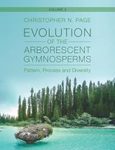About this book
Plant remains can preserve a critical part of history of life on Earth. While telling the fascinating evolutionary story of plants and vegetation across the last 500 million years, An Introduction to Plant Fossils also crucially offers non-specialists a practical guide to studying, dealing with and interpreting plant fossils. It shows how various techniques can be used to reveal the secrets of plant fossils and how to identify common types, such as compressions and impressions. Incorporating the concepts of evolutionary floras, this second edition includes revised data on all main plant groups, the latest approaches to naming plant fossils using fossil-taxa and techniques such as tomography. With extensive illustrations of plant fossils and living plants, An Introduction to Plant Fossils encourages readers to think of fossils as once-living organisms. It is written for students on introductory or intermediate courses in palaeobotany, palaeontology, plant evolutionary biology and plant science, and for amateurs interested in studying plant fossils.
Contents
1. Introduction
2. Highlights of palaeobotanical study
3. Studying plant fossils
4. Early land plants
5. Lycophytes
6. Sphenophytes
7. Ferns
8. Early gymnosperms
9. Modern gymnosperms
10. Angiosperms
11. The history of land vegetation
Customer Reviews
Biography
Christopher J. Cleal is Head of Vegetation History Section at the National Museum of Wales. He obtained his BSc and PhD from the University of Sheffield, and has studied Palaeozoic palaeobotany and stratigraphy for over 35 years, with special reference to the link between vegetation and climate change. He has worked at the University of Sheffield, the Museum of the Saarbrucken Mining School in Germany, the Nature Conservancy Council, and the National Museum of Wales. He is a Fellow of the Geological Society, London, and the Linnean Society, London, a former Council Member of the Palaeontological Association, and Secretary of the British Institute for Geological Conservation. He has published an extensive list of books, and over 100 papers in academic journals, dealing with palaeobotany, stratigraphy and geoconservation. He was on the Editorial Board of the journal Palaeontology, has been co-editor of the biennial Bibliography of European Palaeobotany and Palynology for the last 10 years, and is currently an editor of Systematic Palaeontology.
Barry A. Thomas holds an honorary chair at Aberystwyth University, Wales. He obtained his B.Sc. from the University of Sheffield, and his Ph.D. and D.Sc. from the University of Reading. He has studied Palaeozoic palaeobotany and stratigraphy for over 45 years, with special reference to Carboniferous floras and pteridophytes. He was Head of the Life Sciences Department and Dean of Science at Goldsmiths' College, London; Keeper of the Botany Department, National Museum, Wales; and Professor in the Geography Department, Lampeter. He is a Fellow of the Linnean Society, London, member of the Palaeontological Association, Treasurer of the British Institute for Geological Conservation, and past President of the British Pteridological Society. He has published numerous books and over 120 papers in academic journals, dealing with pteridophytes, palaeobotany, stratigraphy and geoconservation. He started the biennial Bibliography of European Palaeobotany and Palynology, and is currently an editor of Law Science and Policy.



































